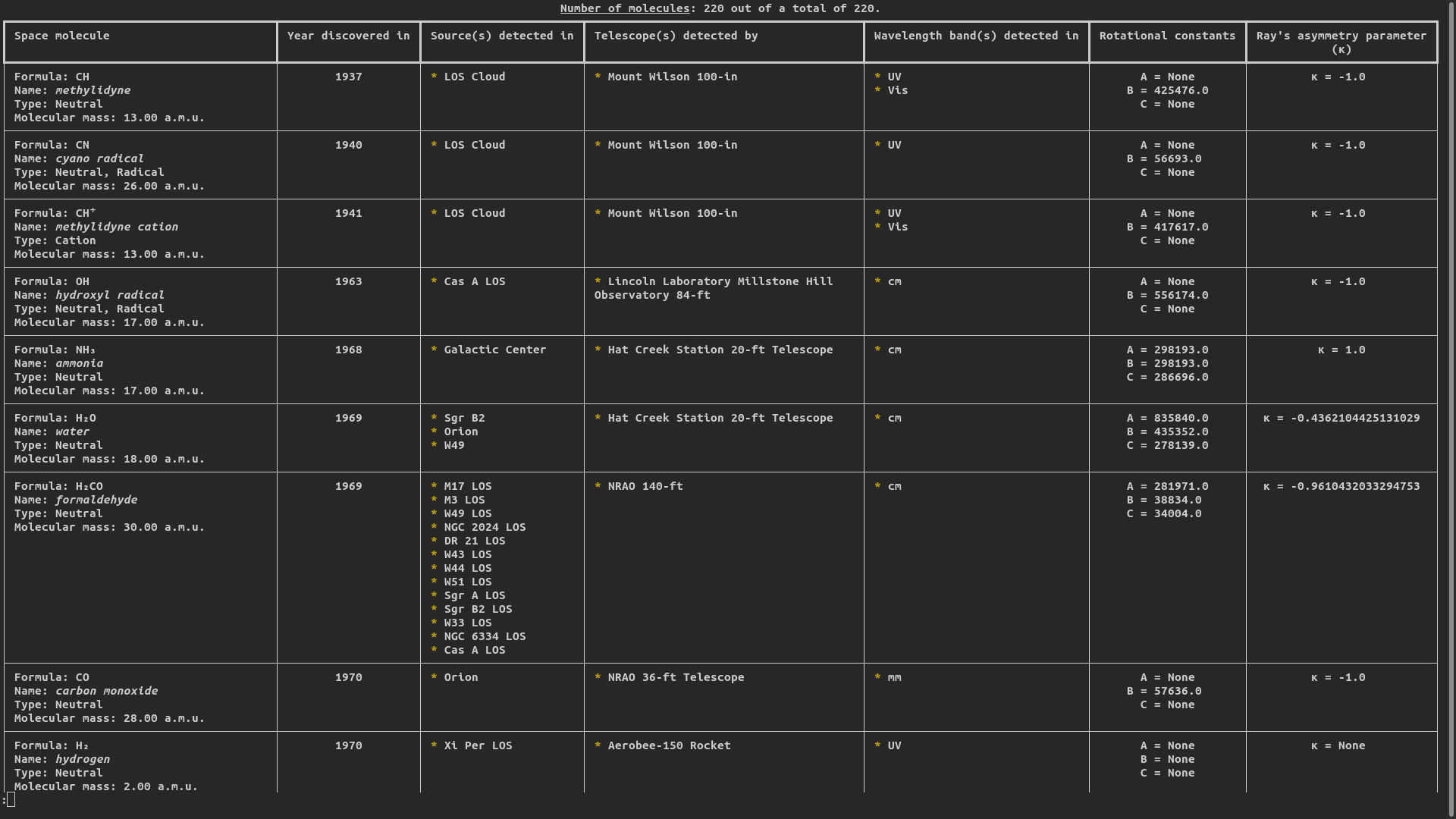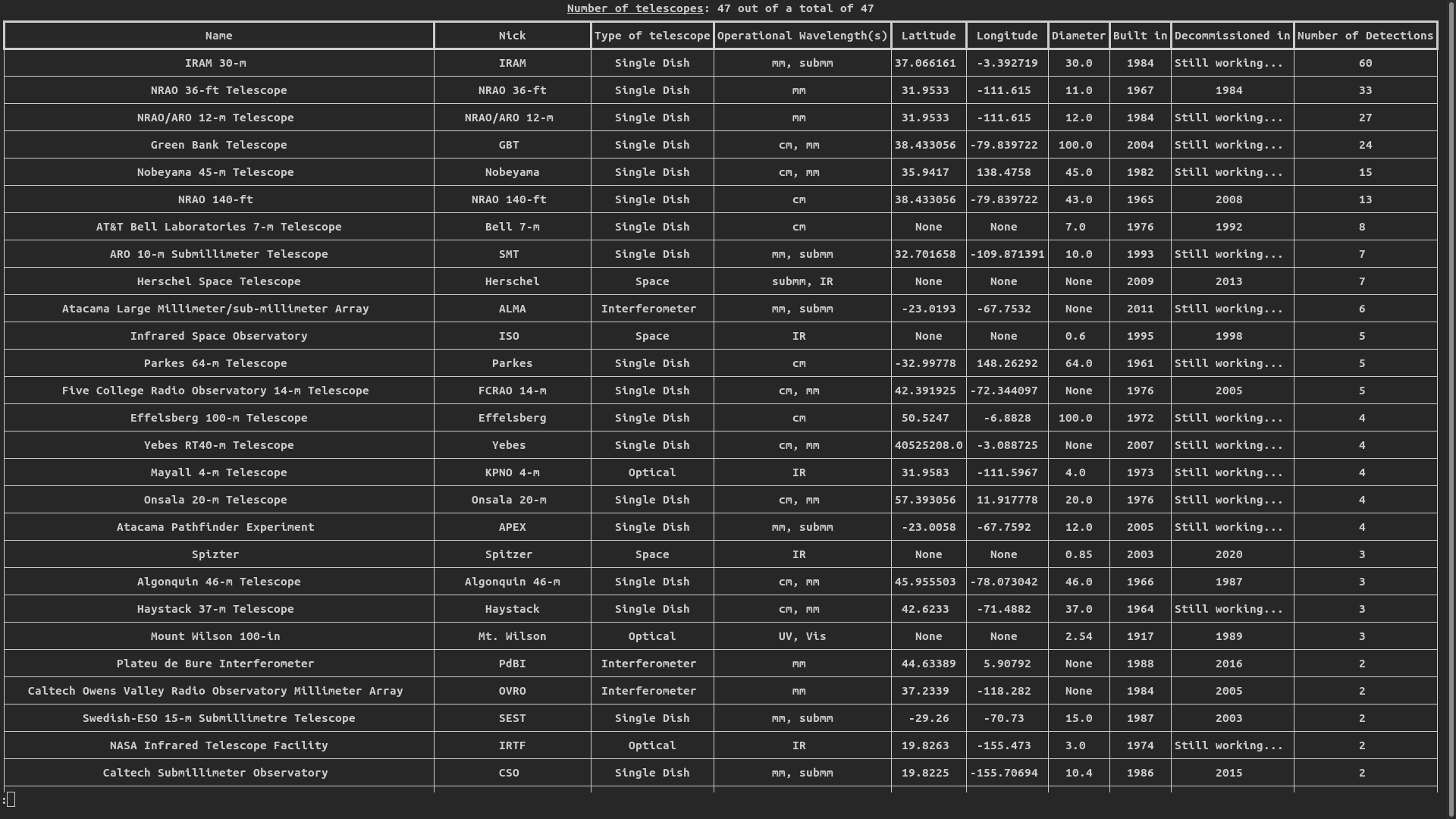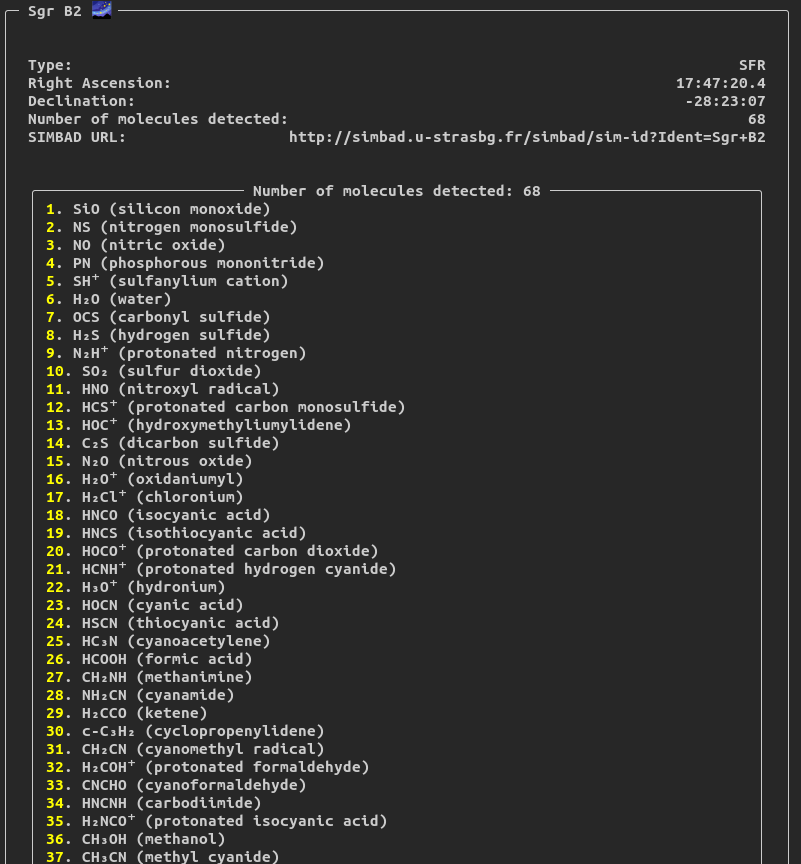The spacetar guide¶
spacetar¶

Space molecules 🧪 ⚗️ in your terminal 💻 !¶
Outer space is cold 🥶 and vast. Since molecules often need to collide with one another with sufficient energy to form and react, scientists assumed that there could never be any molecules in space. Space was just too cold and too big for two molecules to ever encounter one another with enough energy. And then radio astronomers 📡 detected some of the first molecules in space. A realisation hit the astronomical community at large; whatever they thought they knew about chemistry in space was wrong. Thus began a completely new field: ✨ astrochemistry ✨. Since then, we have discovered all kinds of molecules in space: from smelly ammonia 🤢 to intoxicating ethanol, 🍻. To date, we know of more than 200 molecules 🤯 that our telescopes have detected in space, and the number increases each year.
spacetar brings them right into your terminal 💻.
Want to know when the first molecule was discovered in space 🥇 ? Or which telescope 🔭 has detected the most number of molecules? Or maybe you want to know where you can find the most ethanol 🍻 🍷 so that you know where to stock-up when we all get our warp drives 👾? All you have to do is open your terminal and start typing in ⌨️ your questions:
The first molecule ?
spacetar molecules

(This displays the full table of molecules. The entries are arranged by year, so the first row is the first molecule discovered in space! 😁)
Which telescope has discovered the most molecules ?
spacetar telescopes

(This displays the full table of telescopes that have detected molecules in space. The entries are arranged by the number of molecules detected, so the first row is the telescope that has discovered the most number of molecules! 😁)
Where is all the ethanol ?
spacetar molecules --name ethanol

(This displays a pretty summary for ethanol. You can read out all the destinations you are going to hit in the Detected in entry. As you can see, Sgr B2 is the place to be. This cloud has so much ethanol in it that we could use it to supply us with beers for millions of years! 🍻)
You can also get to know more about Sgr B2 by typing:
spacetar sources --name "Sgr B2"
Excited 😁? Check out the docs for more info on how to install and use spacetar, both from within Python and from the command line. If you find this project fun, star ⭐ the repo on GitHub! You can also rave about spacetar, or bring up your ideas 💡 / feature requests, in the discussions or via email. You can also make an issue if run into a bug 🐛.
spacetar, like everything else, stands on the shoulders of giants. It uses data compiled by Prof. Brett McGuire for his paper 📝, the 2018 Census of Interstellar, Circumstellar, Extragalactic, Protoplanetary Disk, and Exoplanetary Molecules. You can find the database, along with some of the code that inspired spacetar in the first place, in the associated GitHub repository. Thank you Brett for the wonderful work 😄 ! If you end up using the database in spacetar for something that might lead to a scientific publication, don’t forget to cite the associated paper above 👍.





